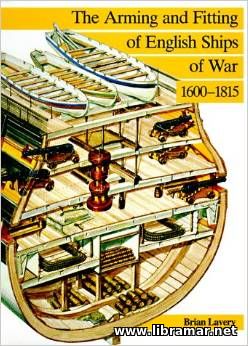 This book is intended to serve two main purposes. The first is to provide ship-modelers, marine archaeologists, and historian; with a guide to how English ships of war were fined out during the great age of the sailing ship. In this respect I hope it will follow in the traditions of James Lees' Masting and Riggings and Peter Goodwin's Construction and Fitting of the Sailing Man of War 1650-1850.
However, the reader will notice some differences from these works. I do not claim to have provided every piece of data on all the fittings of the years in question nor have I attempted to draw up tables of proportions for various ships and periods. Instead, in the main text, I have described the general principles which affected the design of each fitting, and in the appendices provided material from contemporary sources which have been selected largely to provide detailed information and specific dimensions. I have not attempted to interpolate from these to provide proportions which might cover other cases, preferring to leave this to the reader. The second purpose is broader: to study the development of a particular technology for its own sake.
The book is almost entirely confined to the Royal Navy, mainly because there are sources, in the form of manuscripts, plans and models, for this body, while those relating to merchant ship owners are rare, for few records were kept in the first place, and those that were have largely perished...
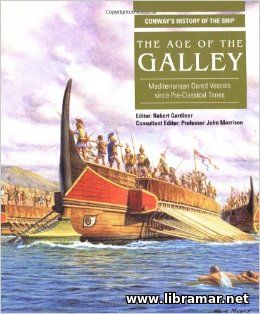 This title belongs to the series of publications providing readers with the detailed and quite comprehensive account of the technologies that have shaped the whole human history. It has been originally conceived as a fundamental reference work considered a first stop for all people who seek the information covering the aspects of the subject and is mainly concerned to be complete.
This volume is very timely and important. In fact, a last decade so much work has been done in all fields and the editors of this volume have made their team of contributing authors with the intention to bring together i a single title the chronologically different areas of work related to this problem. Another important association with this volume is that it covers all historical, geographical and even economic aspects of the galley fleets. This is the first book to enable the readers to perform a correct assessment of the subject. The readers are admitted to the workshop where they will hear the claims and sometimes the disagreements of the workforce and realize that such a publication can only show the ways to these ends.
Long story short, the publication is very useful and will be greatly appreciated by all enthusiasts of maritime history because of the rarely found and valuable information. The content covers the ancestry of the triremes, Hellenistic oared warships, oar systems, Roman empire fleets, merchant galleys, naval installations, and other marine vehicles...
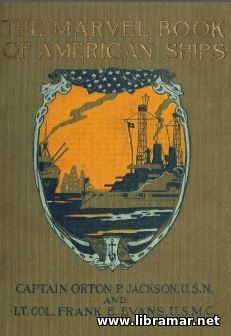 Please have a close look in this very rare and classic publication - we are glad to offer you it's completely revised and significantly expanded edition. The Marvel Book of Ships has been originally dedicated to the United States Navy fleet and the authors of this publication have made a good and successful attempt to sheds some more light on the most important and glorious pages of the history of the US Navy; the main content of the book was prepared by Orton Porter Jackson, Captain of the U.S. Navy, together with Lieutenant Colonel Frank E. Evans, U.S.M.C.
Apart from the very interesting and valuable text part, the book contains twelve perfectly colored plates and more than four hundred excellent remarkably colorful and informative illustrations, all of them made from original photographic images - the total number of photos included in the book reaches four hundred; the color plates mentioned above are depicting, for example, landing of the marines at Vera Cruz, destroyer ships in a seaway, battle-fleet in action, national merchant fags and international code of signals, famous battleships of the past, submarines etc. In short, this interesting publication will serve as a very handy reference source and just a good reading for all historians as well as all other people with a deep and serious interest in the field of naval history.
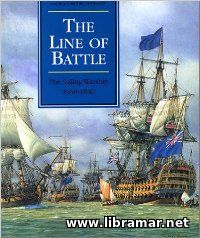 This work by Robert Gardiner and Brian Lavery (who is also the author of the Shield of Empire book) is fully dedicated to the history of the sailing warships in the period stated on the front page. It belongs to the very popular Conway's History of the Ship series and will be of great use for people interested in the naval history and the warships of the past.
The book contains excellent illustrations and so many drawings, photographs and tables providing detailed information and will serve as the good reference source for enthusiasts. In addition to the main fourteen chapters, the publication also contains the Glossary for easier understanding of the terminology. The content of the publication has been restricted to the historical period between 1640 and 1840, i.e. to the time where sail was considered the major motive force for the vessels.
The book has been found to be one of the best volumes available today to provide readers with a concise yet comprehensive historical overview of sailing combat together with the detailed technical information on the sailing ships that used to make up the line of battle, as well as the supporting vessels. The text of the book is excellent and filled with additional supplementary materials, such as twenty-five data tables, and nearly two hundred ship drawings and photos. One of the best sources for the people willing to get a detailed account of the technologies that shaped the history of the mankind.
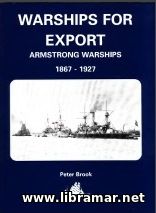 My interest in Armstrongs began in 1944 when I bought a copy of the 1903 edition of Janes Fighting Ships. In the Italian section was a photograph of a cruiser, the "Piemonte". with a description which included the statement that she was one of the earliest Elswick cruisers and that she was the most heavily armed vessel for her size in the world. Intrigued, I found other Elswick cruisers in the volume and comparing them with their Royal Navy equivalents they seemed better gunned, speedier and better looking.
Twenty four years later it occurred to me that a description of these ships might be the basis for two or three articles in the recently founded "Warship International". I wrote to Vickers for more information and eventually I found myself in correspondence with P H Judd, the Chief Naval Architect (merchant ships) who had access to a mass of archival material giving details about Armstrong ships including dates and dimensions together with a number of photograph albums. Eventually a series of articles were published in "W.I." dealing with Armstrong cruisers and other types. They were mostly bald descriptions with little account of the political climate in which they had been built, nothing about their design history and only a sketchy summary of their careers.
Apart from Judd's personal information, based on Armstrong records, all sources were secondary. A few years ago I was contacted by the late David Topliss, then a mature undergraduate at the University of Cambridge, who was engaged in writing the complex and fascinating story of the "Rio de Janeiro". From him I learnt that J. D. Scott, Vickers' historian, had deposited a large amount of Armstrong material in the University Library, most valuably the Elswick Yard Report Books running from 1883 to January 1913, containing bi-monthly reports to the directors on the progress of warships building in the yard. But why bother to write about a firm which ceased to build warships in 1927, of which possibly only one survives, while not even the shipyards and the works which built and armed them remain?..
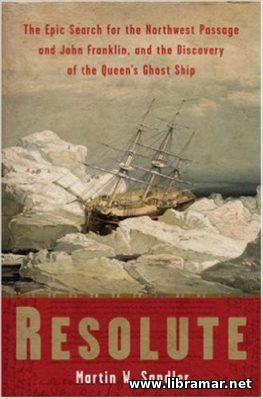 One finds a very limited number of events in history that not only encapsulate the spirit of an age, but tremble on the edge of possibility: That Troy, whose topless towers stirred the West's first and greatest epic verse, could actually be found and excavated; that, on a Christmas night in the midst of the worst trench warfare the world had vet seen. British and German troops could gather together, exchanging whiskey and cigars; that three or four small rips in her hull could bring the unsinkable Titanic to the bottom of the ocean in little more than two hours.
The Arctic—where time itself is among the things susceptible to freezing—where, as the inimitable Rudolf Erich Raspe described in his Munchausen tales, sentences spoken in the winter could not be heard until they thawed out the next summer—has seen more than its share of such tales. Writers of fiction and poetry have found it an ideal landscape in which to unfold the extremities of human endeavor; the efforts of a man "to build a fire" in Jack London's story of that name, or the comfort found in a fiery furnace by the eponymous hard-luck prospector of Robert W. Service's "The Cremation of Sam McGee." could, it seems, have happened nowhere else.
And yet it is the Arctic, more than any other place upon Earth, where the adage that 'Truth is stranger than fiction" finds its most dramatic embodiment, and as the great number of recent books on Arctic explorers testifies, the romance of those "unknown regions of eternal frost" remains strong to this day...
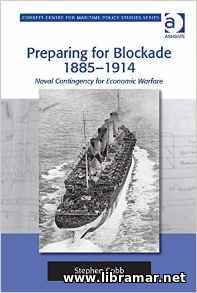 HMS Crescent was the flagship of Rear Admiral Dudley Rawson Stratford de Chair, CB, MVO, commanding the 10th Cruiser Squadron, the 'Northern Patrol'. whose task was to prevent the passage of enemy warships and merchant shipping between Iceland and the north of Scotland, and to intercept contraband on board neutrals.
This extract from an official account of the events of 11 November 1914 described how the sea conditions west of Shetland forced the Squadron to heave-to. HMS Edgar was also damaged, besides losing a seaman overboard. De Chair gave an extended and more graphic description of this event in a posthumous memoir.
Crescent was a protected cruiser, completed at Portsmouth Dockyard in 1893, with her 'sister' ship. Royal Arthur Crescent displaced 7.700 tons: she was 387 feet long, with a beam of 60 2/3 feet, and she had three-cylinder, triple-expansion engines which developed 12.000 horse power and 19 1/2 knots. She was aimed with one 9.2-inch, and twelve б-inch 21ms with others of smaller calibre, and two 18-inch torpedo tubes.
Her complement was 520-550 officers and men. The other members of the 10th CS. the eponymous Edgar. Endytnion. Grafton and Theseus, were of similar vintage and design, but with two 9.2-inch and ten 6-inch guns. One, Hawke, was torpedoed and sunk in the North Sea by U-9 on 15 October with the loss of 560 lives...
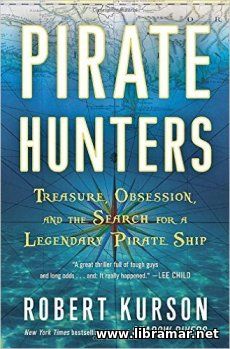 An excellent and very interesting reading, elected the best book of Amazon resource in June 2015 and also one of the best books of same year by Chicago Tribune. The book by Robert Kurson is a thrilling adventure, a mix of danger, historic mystery and suspense. We can say that one of the most difficult things to do under the surface of the sea is to find and identify a pirate vessel.
Two men - John Mattera and John Chatterton - are risking everything trying to find the famous ship of the infamous pirate of the past, Joseph Bannister, called the Golden Fleece. In the Golden Age of Piracy - in the XVII century - he should have been immortalized in the lore of the sea... The book is face-paced indeed and filled with suspense, it is a really unputdownable story going so deep to discover souls and truths long believed lost.
The book shall be highly recommended to all readers delighting in sea adventures. The readers all around the world have highly rated this book and found it to be a non-fiction volume with the trademarks of an excellent and fascinating sea novel, saying that the narration presented by the authors was just as engrossing as the subject of the book. What the author did is that he took all his professional knowledge of the whole underwater world and applied it to the famous Golden Age of Piracy, and this has resulted in a great thriller.
« 1 2 ... 10 11 12 13 14 15 16 » |







